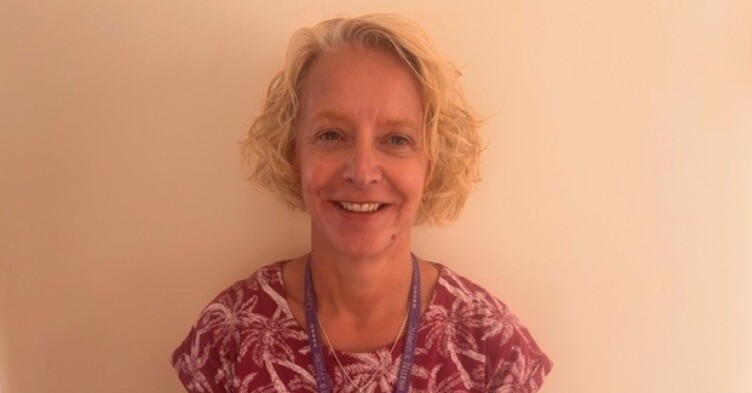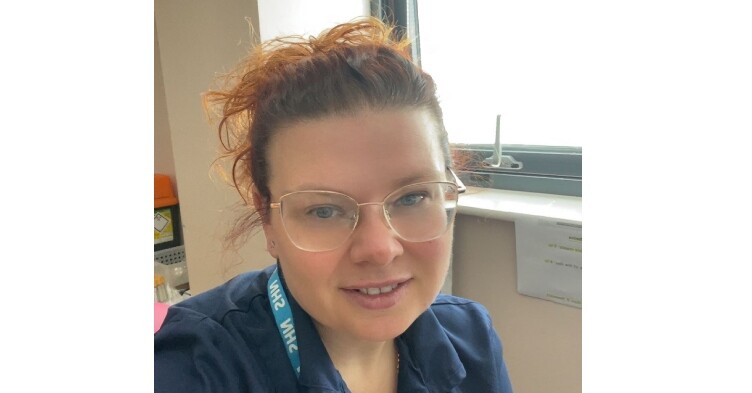Why men might be the answer to the staff shortfall

Statistics, predictions and analyses all tell the same tired tale: the NHS staff shortage is only getting worse. The situation is even more dire in nursing and midwifery, with vacancies higher than any other staff group at 40%. Yet there might be a simple solution to the growing crisis – recruiting more men, who account for only around one in 10 nurses in the UK.
The NMC found that just 11.4% of registered UK nurses in 2017/18 were men – barely improving on the 2007/2008 figure of 10.69%. The gender divide gets wider in general practice with men making up just 2.1% of practice nurses, according to NHS Digital data (see graph, page 22). The Universities and Colleges Admission Service, which administers the university application process, reported a slight increase in applications from men to study nursing this year, from 3,400 to 3,620. But that is a drop in the ocean compared with an overall decrease of 39.22% from 2010 to 2019.
The lack of men is because nursing is widely viewed as a feminised profession, according to Professor Heather Whitford at the University of Dundee, something that she acknowledges will not come as a surprise. She studied the under-representation of men on pre-registration nursing courses in Scotland in 2018. As part of her research, she conducted focus groups with male nursing students and nursing lecturers, finding that although nursing is seen as a worthwhile career for men, this was often not enough to attract male applicants.
‘They thought becoming a nurse was rewarding and had career progression that provided financial security and opportunity for travel. However – no surprise – nursing is inherently seen as a female profession and for many that is a powerful deterrent,’ she said.
Male nurses believe they are viewed as less caring both by wider society and some female nurses, Professor Whitford found in her paper, which also reviewed existing literature. She also cited research suggesting some men working in all-female environments can find it difficult at times, which may result in feelings of isolation. NHS workforce statistics from 2018 appear to reinforce the conclusion that men feel they are treated differently from their female peers, particularly when it comes to community healthcare: 41% of male community healthcare staff feel discriminated against because of their gender – a higher percentage than both women working in community healthcare (22%) and the national average of both genders across all trust types (21%).
Professor Whitford said that male nurses often need maturity and resilience to overcome feelings of isolation, stereotyping and judgment from peers. ‘There’s often surprise or ridicule or mockery,’ she said. ‘You have to be quite strong to be able to cope with that.’
But she also suggested that boosting the numbers of men in nursing might come with drawbacks for female patients: ‘It can be advantageous in terms of different communication styles and we found a more gender-balanced workforce had a more positive effect. But sometimes in the clinical areas, provision of intimate care by male nurses could be problematic, although nobody asks male patients if they are happy to be cared for by a nurse who is a female. And if they’re not, there’s no alternative.’
Tobye Smith, a newly qualified nurse enjoying his first post as a practice nurse in Hertfordshire, said he is not offended – and ‘never will be’ – if a female patient requests a female nurse instead.
Related Article: Lower limb care in general practice: ‘It’s about giving people their lives back’
As a student, he found his gender was typically met with harmless bafflement from patients, rather than resentment or suspicion.
‘One delightful elderly patient was quite surprised when I gave her a bed bath on my own,’ he recalled. ‘She remarked, “I never knew a man could be so gentle, yet so thorough”. Needless to say, I greeted that statement with a refreshed big grin. I will remember her for years to come.’ When patients mistake him for a doctor even though he is wearing a standard nursing uniform, Mr Smith says he finds it ‘quite comical’.
The rare instances when Mr Smith is singled out because of his gender often come from colleagues. For example, when he was a student on a ward-based placement, a senior female nurse assumed he wanted to work on male patient bays even though his female counterparts were awarded ‘the privilege of choice’.
Similarly, on his first ever clinical placement, in a nursing home, he was entrusted with taking an elderly male patient to the toilet alone. He said: ‘The senior carer who delegated this task to me later admitted she had done so because I was a man. She wrongly assumed, because of my gender, that I was an expert in assisting elderly men in going to the toilet. Of course, I was far from that.’
‘Doctor equals male, nurse equals female’
Mr Smith wanted to become a nurse after he fell ill as a child. ‘I wanted to give back to a system that cared for me,’ he said. ‘But I was never told at school I could become a nurse, only a doctor, so perhaps we need to change the fundamentals of our social values and traditional norms?’
Interestingly, Professor Whitford and her team found that a personal history with nursing and healthcare – whether as a carer, being cared for or having a positive male nursing role model – is a common theme among male nurses.
Professor Whitford says that nursing must also attract men who do not have an intimate connection with the profession, but Mr Smith questioned whether nursing is now less appealing after the abolition of the bursary in England in August 2018. He said that without ‘this incredibly essential financial support, it would be many years until I’d be able to start my nursing training’.
The focus groups interviewed by Professor Whitford and her research team worried that mature male students might be disproportionately affected by the cut. Professor Whitford added: ‘Particularly if they have come from another career, and if they are a bit more mature, maybe they have already got a mortgage or a family or children to support.’
In her research, Professor Whitford also found that traditional promotional materials are overlooking half the population. She said: ‘Focus groups noted there was often an absence of male nurses in advertising for university recruitment material and that wasn’t helpful, and the teachers reported that they really didn’t have much knowledge about the role or the variety of career options that nursing offered.
‘Material should promote the skills and qualities of a nurse, rather than the gender, and emphasise the academic nature of the programme, which I think is sometimes attractive to male applicants.
‘Clearly, education should begin early with the gender-neutral branding of all professions, not just nursing, as well as an early introduction of health and healthcare topics using gender-neutral images and languages. Careers advisers and teachers can be influential and sometimes their lack of knowledge, or their unconscious bias can be influential.’
It is no surprise, then, that an NHS Health Careers 2016 study found that seven out of 10 children aged between seven and 11 picked images of women when asked to identify a children’s nurse and the same proportion picked a man when asked to choose a surgeon.
Barry Clarke, a practice nurse in Greater Manchester, echoed this sentiment, commenting: ‘We all know who Florence Nightingale is, but do we know who the first male nurse was on the register?’ He thinks there are subtle hangovers from when nursing was considered a profession just for women that are holding it back, such as gendered language. For example, he hates the term ‘male nurse’. He said: ‘We’re all nurses – female, male, no matter what. The term should just be gone.’ Similarly, he thinks the term ‘charge nurse’ should replace ‘ward sister’. Scotland has already made the switch, with both genders in the job now referred to as ‘charge nurse’ in the hope of attracting more men to the profession. Professor Whitford and her team came to similar conclusions, finding that terms such as ‘male nurse’ reinforce female stereotypes.
Related Article: Career change to GPN: ‘I wish more people knew what a great place it is to work’
‘There is quite a lot of stigma among nurses about the male population of nurses,’ said Mr Clarke. Examples include assuming a male nurse must be either feminine or gay. Yet Mr Clarke noted that male doctors often escape any similar judgment, to the point that they may be treated differently even when carrying out the same work.
‘I’ve asked my friends whether they would have an issue with me delivering their baby, and the answer is yes, but they wouldn’t have an issue with a male doctor,’ he said.
Sue Warner, chair of the RCN Council, has confirmed that tackling these gendered perceptions as early as possible is a target. She told Nursing in Practice: ‘One of the things we’ve been talking about, and it may have started already, is going out into schools. We need to get people when they’re young, because children’s attitudes are fixed – doctor equals male, nurse equals female. And we know that isn’t the case. But if you ask a boy ‘would you like to be a nurse?’, they’ll say no.’
Are you man enough to be a nurse?
In May 2018, the RCN Congress rejected a resolution to launch a ‘sustained, UK-wide targeted approach to challenge the problem of gender stereotyping’ in order to recruit more men into the profession. Indeed, it may be that non-gendered recruitment campaigns may offer a bright future. For example, NHS England’s recent drive, ‘We Are The NHS’, was aimed at school children aged 14 to 18 and saw a small but encouraging 9% rise of 18-year-old men applying to nursing – jumping from 370 applications in 2018 to 440 in 2019.
‘Getting more men into nursing is a great idea,’ said Professor Alison Leary, chair of healthcare and workforce modelling at London South Bank University (LSBU). ‘But we could exacerbate the issues we’ve already got.’ In recent research, Professor Leary and LSBU colleagues revealed stark gender pay inequalities across the UK nursing workforce. For example, male specialist and advanced practice nurses reach higher paid posts more quickly; women are more likely to accept dropping a pay grade to land a job they want; and men in nursing are overrepresented at higher pay grades, but underrepresented at band 5.
Professor Leary agrees that efforts to increase the number of men in nursing should be careful not to masculinise the profession. She said: ’If you look at what happened to IT in the 1950s, 60s and 70s, IT was primarily a female occupation. It was seen as administrative work. And now it’s a knowledge-intense, relatively high-paid occupation in which men dominate the workforce. When professions do become masculinised, the females and other groups like BME people tend to lose out, tend to be at the bottom of the scale.
‘It’s a societal issue, so we need to address the perceptions of nursing and its value in society, and that includes improving working conditions, and then hopefully that means it’s more attractive to everybody’.
Professor David Clarke, a nursing academic and former midwife, studied the experience of gay male undergraduate nursing students in his thesis. He looked to the Oregon Centre for Nursing in the United States as a bad example of how to attract more men to the profession. In 2002, the Centre asked local men ‘Are You Man Enough To Be A Nurse?’. But Professor Clarke believes that associating traditional masculinity with nursing ‘just reinforces more stereotypes – or a new set of stereotypes. We all have very different backgrounds, whether that’s our sexuality, the colour of our skin, our religion or just the way we look at the world. We are all really individual and that’s what needs celebrating, more than a campaign to get more men in.’
Equally though, transforming nursing into a career that is equally attractive to everyone – including men – might be impossible unless we tackle deep-rooted societal bias, says Professor Clarke.
Related Article: Poor maternity pay ‘putting off’ nurses from general practice
‘I think if we work hard as a profession to be as inclusive as possible, and to recruit in a really inclusive way, and to represent ourselves at our best and in a positive light, that will help increase men in nursing but I don’t think that will reach the 50/50 point. I think society changing would happen to address the gender imbalance.’
Naturally, the lack of male nurses overall feeds into general practice. Sarah O’Donnell, a senior lead practice nurse, says it’s ‘logical to think that there are fewer males in general practice’. She hopes that the 10-point action plan to transform general practice nursing will help ensure the role is more attractive to everyone. Released in July 2017, the plan is rolling out changes including better celebrating general practice nursing, extending leadership and educator roles, and increasing access to clinical academic careers.
Ms O’Donnell also thinks a surge in the numbers of men in nursing would ‘really help in the uptake of males accessing healthcare’. She added: ‘Men’s health groups are run around the country and a male lead in this case could also be more beneficial.’
Whether or not the 10-point action plan will boost recruitment of nurses, including men, remains to be seen – but Mr Smith hopes more men take up the mantle regardless. He said: ‘The lack of men in nursing should encourage potential male nurses to be the change. It’s important to educate the public: nurse is not a gender, it’s an occupational title to which all genders should belong.’

See how our symptom tool can help you make better sense of patient presentations
Click here to search a symptom


Mimi Launder asks whether nursing should be promoting itself more to men




![Menopause: identification and management [NG23]](https://s3-eu-west-2.amazonaws.com/images.nursinginpractice.com/wp-media-folder-nursing-in-practice/wp-content/uploads/2025/03/PULSE-NIP-UPLOAD-BAYER-NICE-MENOPAUSE-A5-HANDBOOK.jpg)
